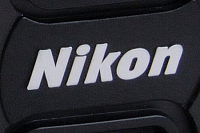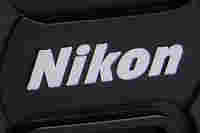Basic Photo Theory and Digital Workflow (2 of 4)
RAW or Jpeg?
There is one more decision to make before we go any further... and it's a biggie! Do you want the photographs you shoot saved as RAW files or Jpeg files? The choice will have a significant effect on the quality of your images, their overall suitability for some uses, and the post-processing workflow required to get the most out of them.
We all know Jpeg images. They are the standard image file format used today. Anything from web graphics to sending photos as email attachments will use the Jpeg (.jpg) format. The reason for its popularity as a format is that it is a variable compressable file. That is to say, when we save our image as a Jpeg we can choose how much compression on the image file to use. This has two effects. Depending on the compression factor, the actual file size can vary considerably, making it a great tool to reduce file size when sending email attachments etc. The down side of this is, the more compression you add, the worse the resolution of the image becomes, with visual 'artefacts' becoming quite noticeable at high compression rates.
 Original Image |
 High Compression Jpeg |
However, if you are wanting the very best quality images from your camera, you should really be shooting in (pause for fanfare) 'RAW Mode'! This saves your images as raw digital data, directly from your camera's sensor. It doesn't pass through any software filters or have any in camera settings applied. This is your image in its purest form, at the highest resolution your camera can provide.
The down side of shooting in RAW is that file sizes can be huge, depending on your camera's sensor resolution (although most cameras allow the user to swap between Raw + Jpeg/Tiff mode, saving 'mixed' file types onto your memory card). Also, before you can use your RAW image, it has to be converted from its raw data state to a more conventional graphics file format (such as Tiff or Jpeg), but before that, you have to tweak the image, adding sharpening, colour, contrast and other exposure tweaks. This is known as post-processing. Although this looks like a lot of work to get your image into a useable state, the beauty of working in Raw is that you have a huge amount of control over the exposure (and other attributes) of your image AFTER it has been taken, as you're effectively still adjusting the digital 'code' of the image. It is only when you save your processed image in another file format that the exposure of the image is 'locked', so to speak.
For this reason, most keen photographers will always shoot in RAW, and their workflow will include using a RAW conversion program for initial tweaks to exposure, sharpeness etc. They will maintain their original RAW file as their digital negative (stored seperately, and not to be overwritten with a tweaked version), and will use a saved Tiff as their working copy of the image to be finalised in Photoshop, Paint Shop Pro or another graphics application.
However... there has been a massive step change in the way digital photographers process their images recently, with the introduction of Adobe's Lightroom software. Previously, you would require a suite of different applications to get the best from your digital images... one to organise all your images on your hard drive, another to convert your RAW files (preferrably your camera's branded software), a graphics app to tweak all the exposure, sharpness, levels etc etc. It was all getting very messy, complex and quite expensive. Lightroom pretty much does it all now. Although you can still carry an image out to another app to do some specialist tweaking (filter sets, layers work), you always return to Lightroom to finalise the image. It acts as the central hub for all your photographic work, and does an excellent job of it, giving you full control and flexibility of all the variables within a RAW image. This level of creative flexibilty alone is reason enough to choose to shoot in RAW... you get the best from your camera's sensor, with maximum control during post processing.
For more information on Adobe Lightroom, see my 'An Introduction to Lightroom 5'.